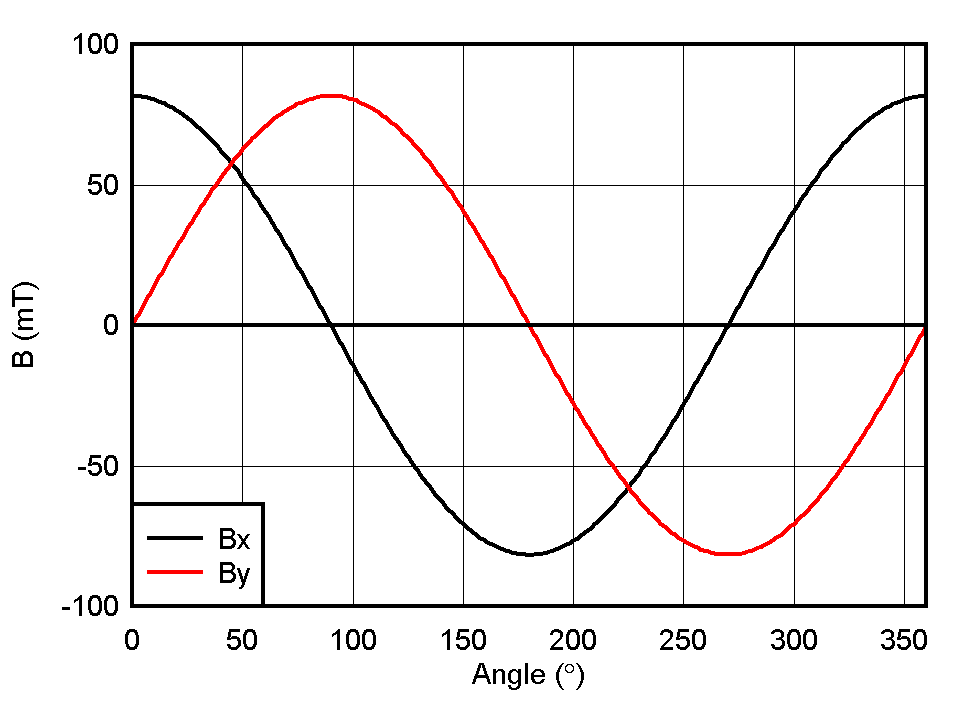SNOAA90A february 2023 – may 2023 DRV5033-Q1 , LDC3114-Q1 , TMAG5170-Q1 , TMAG5170D-Q1 , TMAG5173-Q1
3.2 Hall 3D Linear Dial
One way to remove the risk of wear and tear from electro-mechanical wear and tear is to use a sensor that does not have mechanical contacts. Linear Hall-effect sensors can give a variable output for a changing magnetic field. For a rotational sensing application, designers can have a magnet rotating with the dial and sense the two changing axis of the magnetic field.
 Figure 3-1 Magnetic Field Components For Magnet Rotation
Figure 3-1 Magnetic Field Components For Magnet RotationDesigners can use a single 3D linear Hall sensor to get these measurements. From the data shown, only the Bx and By fields are required to calculate the angle of the magnet. Devices like the TMAG5170-Q1 and TMAG5173-Q1 can measure all three axis of the magnetic field and even provide the angle of the magnet through a register value so that the microcontroller (MCU) does not have to calculate the angle based on the field data. Alternatively, the TMAG5170D-Q1 is a dual-die version of the TMAG5170-Q1 that can be used if redudency in the system is required. If the magnet is aligned with the sensor, the two axis of magnetic field data can also be used to implement a push button. The third axis of the magnetic field can be used to provide some predictive failure data or assist in the push button feature for cases where the first two axis cannot provide a reliable push button output. The push button on a rotational dial implementation is showcased in the TMAG5170UEVM's rotate and push module. One downside to this method of sensing is that external magnetic fields can impact the rotational measurement. Sensing the presence of an external field is possible with a 3D sensor or an extra Hall sensor, but the presence of the field can still impact normal functionality. For more information on using Hall-effect sensors in linear dial applications, see the Absolute Angle Measurements for Rotational Motion Using Hall-Effect Sensors, application brief.